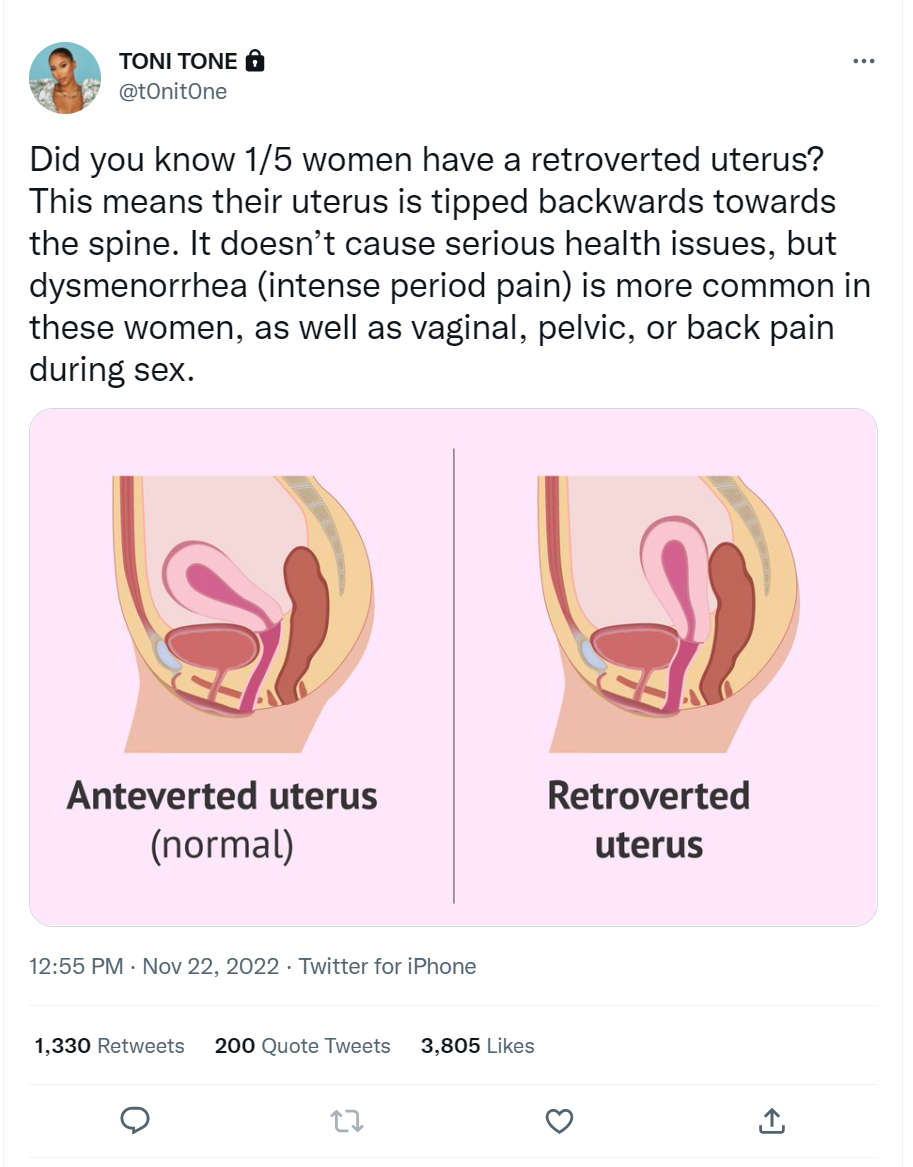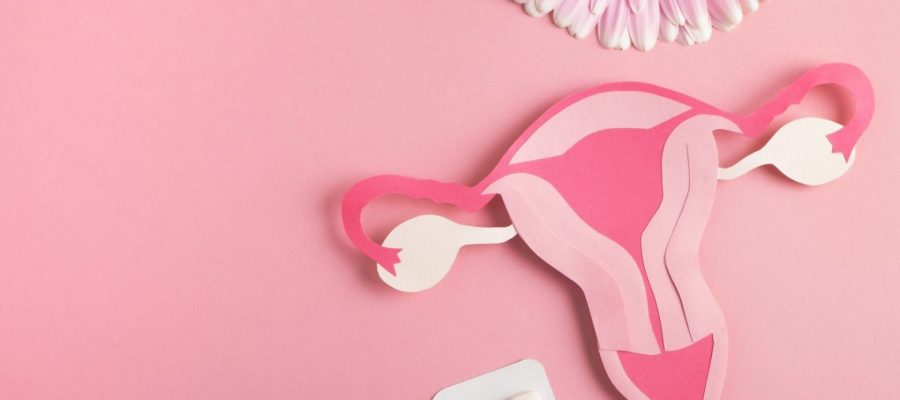If you’ve ever suffered from excruciating period or ovulation pain, you might have a retroverted uterus. Here’s your one-stop guide to symptoms of this rarely discussed issue, writes Anna Bartter
If, like me, you’ve struggled for years with issues such as repeated urinary tract infections and painful periods,there may be a reason for it after all. After countless excruciating cervical smears and even trouble inserting tampons at times, it turns out that I might have a retroverted uterus.
According to research, a retroverted uterus affects as many as 20% of women, and yet, more often than not, it isn’t mentioned during a gynaecological exam. Relatively common, it often won’t cause any symptoms, but for lots of women, it could be the answer to a whole host of problems down there.

What is a retroverted uterus?
Intimate health expert Dr Shirin Lakhani explains that a retroverted uterus, also known as a tipped or tilted uterus, simply means “the uterus is tilted backwards toward your spine instead of towards your abdomen”.
Your uterus, or womb, is around the size and shape of an inverted pear and sits between the bladder and rectum in your pelvis. Lakhani says, “Some people never know they have a retroverted uterus as it doesn’t cause them any symptoms.”
But anyone who has ever had a medical professional rooting around during a cervical smear will know that the exact position of the uterus varies from person to person, and it can change, especially during pregnancy.
You may also like
Cervical cancer screening: We asked 50 women about smear tests. The answers were unexpected
Kal Osahan, 41, discovered she has a retroverted uterus during IVF treatment. “Usually, you have to empty your bladder for check-ups during IVF,” she explains, “but I needed a full bladder to make my womb tip forwards. It did make me feel like there was something wrong with me, but it’s nothing to worry about – it just makes my back ache during my periods and also, I have to shift position during a smear test so the nurse can find my cervix!”
Official diagnosis is usually through a scan, but unofficially, many women are told in passing by their doctors that they have a retroverted womb, and it can be useful to be aware of, even if just to explain those niggly aches and pains we commonly put down to hormones.
What causes it?
As with so many other things, we likely have genetics to thank for the positioning of our uterus. Our gynaecological organs develop and position themselves way before we’re even born, so there’s nothing we can really do to affect it.
Some pelvic health physios recommend exercises to help tip the womb forwards, but this is a temporary measure at best. Occasionally, a tilted uterus can be a result of underlying conditions, such as scarring from endometriosis, pelvic inflammatory disease or surgery.
“Fibroids can also cause the uterus to tilt backward as can pregnancy,” advises Lakhani. “The ligaments that hold the uterus in place can become over-stretched and then stay that way, causing the uterus to tip backwards.”
What are the symptoms?
While the good news is it won’t cause any serious health complications, the reality is that a retroverted uterus will cause pain and discomfort in some women. The symptoms can be subtle, so it’s worth knowing if there’s a reason for them.
Dr Lakhani explains: “Symptoms can include pain in your vagina or lower back during sex, pain during menstruation, difficulty using tampons, pressure in the bladder and more urinary tract infections as well as mild incontinence and a slight protrusion of the lower abdomen.”
Pain during sex
Having a uterus that tilts backwards can make some sexual positions uncomfortable, to say the least. It’s important to remember that pain during sex isn’t normal, and if you’re worried, contact your GP, but if things are feeling a little too intense in certain positions, you might want to stick to the ones that do feel good.
Trouble inserting tampons
Tampons, or menstrual cups, are supposed to be relatively easy to slide into place, so if you’re finding that they aren’t sitting comfortably, it could be a sign of a tilted uterus.
Painful periods
Women with retroverted uteri seem to experience more significant pain during their periods, and report back pain more commonly. This is most likely to be because the uterus is pushing against the spine.
It’s not all bad though, as Osahan says that her back pain helps her to identify when her period is due, and lots of women notice ovulation pain when they have a tilted uterus, which can be beneficial when it comes to trying to conceive.
Urinary problems
If you’re particularly prone to developing UTIs, the position of your uterus could be to blame. Having a backwards-facing uterus can put pressure on the bladder, causing mild incontinence and feelings of pressure in the abdomen.
You may also like
IUDs: healthcare experts answer the most important questions
Does it affect fertility?
For the most part, the experts agree that women with a retroverted uterus are just as likely to conceive as those with a forward facing one. However, some women report increased back pain during their labours as a result of the uterus pushing backwards against the spine, in a similar way to period-related back pain.
Research shows that a retroverted uterus increases the chance of a prolapse, so while nothing to worry about, it can be useful to know if you’re likely to be at increased risk due to the positioning of your uterus.
Ultimately, there’s little that can be done about the position of your uterus, and experts agree that it has little medical impact, but it is comforting to know that it’s not just me, and that I’m not just making a fuss when my smear tests verge on the painful.
However, Dr Lakhani advises: “If you have some of the symptoms it is important to see a doctor to check it is not the result of an underlying condition.”As always, if you’re concerned about any of your symptoms, consult your GP.
Images: Getty
Source: Read Full Article
